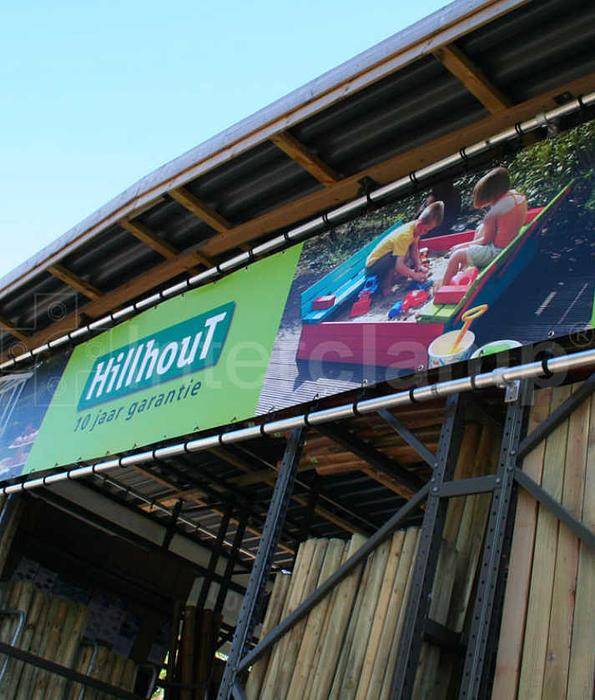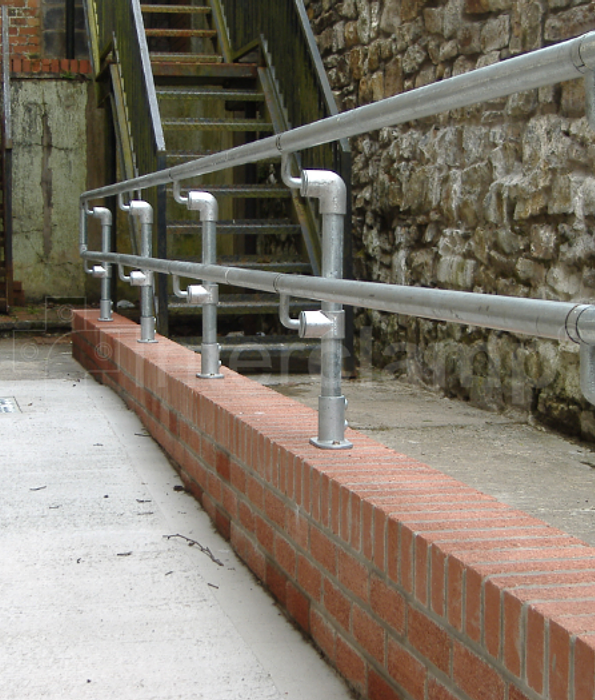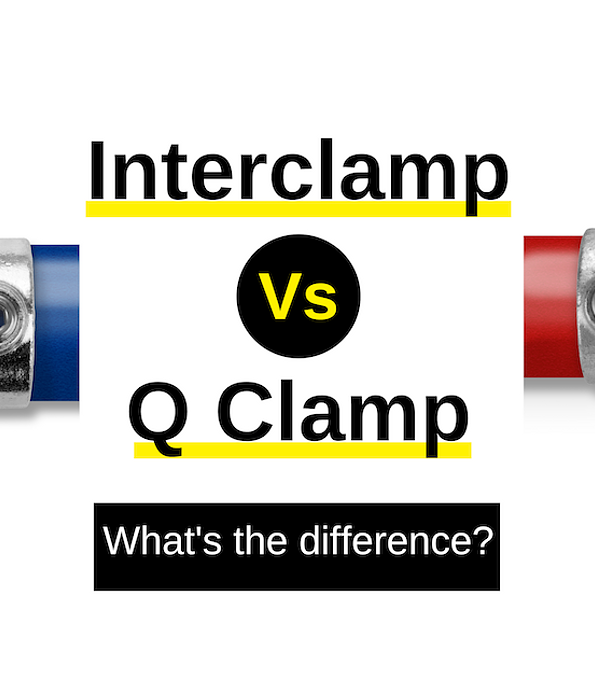Could tube and clamp offer a cost-effective solution for safe standing in football stadiums?
Since August 1994, under the Football Spectators Act 1989 (as amended), clubs in the top two tiers of English football have been required to play in all-seater stadiums
Since that point, all-seater stadiums have been seen as key – if not the only solution – to maintain crowd control and ensure safety at large sporting events. An all-seater stadium has been a requirement for all Premier League (tier one) and Championship (tier two) grounds since, and clubs promoted to the Championship for the first time have up to three years to convert any standing areas to seats.
However, with improvements in stadium design, continued calls from supporter groups and the success of ‘safe standing’ in other European countries, there have been repeated calls for change. And that change is now here.
Article in brief
Following the positive feedback on initial pilot scheme, the Government has announced that Premier League and Championship clubs wishing to introduce licensed ‘safe standing’ areas at football stadiums will be able to do so from the start of the 2022/23 season.
However, the cost and logistical implications of introducing bespoke railing seating akin those seen within European stadiums may prove problematic for some clubs.
For safe standing fans must be able to sit or stand in the licensed area, meaning seats cannot be locked in the ‘up’ or ‘down’ position. In addition, there must be one seat/space per person and it must not impact the viewing standards or other fans.
Rails used must be a minimum height of 800mm, with a preferred height of 900mm. There should also be a minimum clearway of 305mm between the railing and seat, with the preferred clearway being 400mm. From a loadbearing perspective, the regulation states any railing must be able to withstand a minimum of 1.5 k/n (153kg) or 2 k/n (204 kg), depending on the type of barrier being used.
Using tube with a diameter of 42.4mm and having a vertical strut every one metre at a height of 900mm, the horizontal load capacity would be 850kg and the vertical strut load capacity would be 2028kg. This, in theory, would exceed the required load capacity set by the regulation, giving you a strong cost-effective alternative.
A new era in football crowd management and safety
In September 2021, the Sports Grounds Safety Authority (SGSA) – the body responsible for licensing of football stadiums – announced that it had been instructed by the Government’s Department for Digital, Culture, Media and Sport (DCMS) to take the first steps towards licensing standing areas.
Clubs in the Premier League and Championship were invited to apply to offer licensed standing areas as part of a ‘early adopter’ programme. From 1st January 2022, standing was reintroduced with a number of criteria in designated (licensed) areas at the stadiums of Cardiff City, Chelsea, Manchester City, Manchester United and Tottenham Hotspur.
These early adopter clubs will enable the Government to evaluate the success of standing areas before any wider implementation is considered, but early feedback has been positive.
Following the positive feedback on initial pilot scheme, the Government has announced that Premier League and Championship clubs wishing to introduce licensed ‘safe standing’ areas at football stadiums will be able to do so from the start of the 2022/23 season.
A report on last season’s trial at the early adopter clubs has concluded that the installation of barriers or rails had “delivered a positive impact on spectator safety and improved fans’ match day experience in both home and away sections”.
What does safe standing look like?
One method of safe standing is ‘rail seating’, which is common in German football stadiums. Seats are incorporated within a metal frame that forms a waist-high rail for spectators in the row behind and the frames interlock to form a continuous high-strength rail along the full length of each row. The installations are permanent, with the same spacing as standard seats.
Typically, the seats can be locked when safe standing is in operation and unlocked when all-seater stadiums are required (for example, in European cup competitions or international games). This can come at great expense to football clubs, as it requires all existing seating to be removed and replaced with bespoke products that have been fabricated purely for this purpose.
One of the requirements of the licenses granted in the England and Wales ‘early adopter’ trial was that fans must be able to sit or stand in the licensed area. This means the seats cannot be locked in the ‘up’ or ‘down’ position.
In addition, there must be one seat/space per person and the licensed standing areas must not impact the viewing standards or other fans, including disabled fans.
Tube and clamp – a potential alternative solution
Removing the requirement to lock seats in the ‘up’ or ‘down’ position opens up a more cost-effective solution for football clubs in the England’s top two tiers.
Tube and clamp products, like those available from The Metal Store, could provide a viable alternative to create barriers that meets the initial criteria set out for a full adoption of safe standing.
Any safe standing football railing infrastructure must meet the necessary size and loadbearing requirements set out by the Government to ensure spectator safety.
The current guidance dictates the minimum height of the rails should be 800mm, with a preferred height of 900mm. There should also be a minimum clearway of 305mm between the railing and seat, with the preferred clearway being 400mm.
From a loadbearing perspective, the regulation states any railing must be able to withstand a minimum of 1.5 k/n (153kg) or 2 k/n (204 kg), depending on the type of barrier being used.
Based on the data available, this safe standing guidance could potentially be achieved through tube and clamp.
Using tube with a diameter of 42.4mm and having a vertical strut every one metre at a height of 900mm, the horizontal load capacity would be 850kg and the vertical strut load capacity would be 2028kg. This, in theory, would exceed the required load capacity set by the regulation.
Crucially, tube and clamp could provide clubs with a cheaper alternative to meet the technical requirements of safe standing barriers, without the cost of continental-style rail seating. Products are available in a range of corrosion-resistant materials too, with powder-coated finishes to suit all stadium designs.
At the Brentford Community Stadium, plans are going ahead for safe standing. The club is converting the entire West Stand, Block S100 in the South Stand and a section in the away end to licensed safe standing areas, using barrier installations rather than rail seating. This is where tube and clamp could potentially be used to create the barriers.
Prior to the legislation being approved, the club said:
In the unlikely event that the legislation does not proceed, then the barrier installation will still take place as we believe it will enhance spectator safety in areas where we have seen persistent standing.
This move goes some way to show the shift in attitudes from clubs and supporters now that the door has been opened This for safe standing.
With the legislation now being given the green light, barrier installation will no doubt be of interest to other clubs, who – with support from fans and access to more cost-effective solutions via tube and clamping – could seek to introduce safe standing at the earliest opportunity.
However, it is worth noting that although the data suggests that tube and clamp may be a suitable solution for safe standing railings at football stadiums, any use would have to be subject to clearance and approval from the relevant regulatory bodies.
A new era football needs a new solution
With the Government’s announcement that Premier League and Championship clubs can introduce safe standing areas to stadiums, it marks the start of a new era in crowd management at football matches.
However, the cost and logistical implications of introducing bespoke railing seating akin those seen within European stadiums may prove problematic for some clubs.
For a cost-effective option which meets the regulatory requirements, tube and clamp may potentially prove to be the barrier solution of choice for football clubs.
Not only is tube and clamping versatile so could work in most stadiums, but it is also extremely robust with data suggesting it could meet and exceed the loadbearing safety requirements set out by the regulations.
The Metal Store is a leading stockist of tube and clamp solutions, supplying a wide range of products to customers across the UK. Choose galvanised, mild steel, aluminium, powder coated, stainless steel and FRP tube, with clamps to suit all requirements.
If you’re keen to learn more about the potential of tube and clamp solutions for safe standing in a football stadium, get in touch on 01274 875 479 or e-mail sales@themetalstore.co.uk



